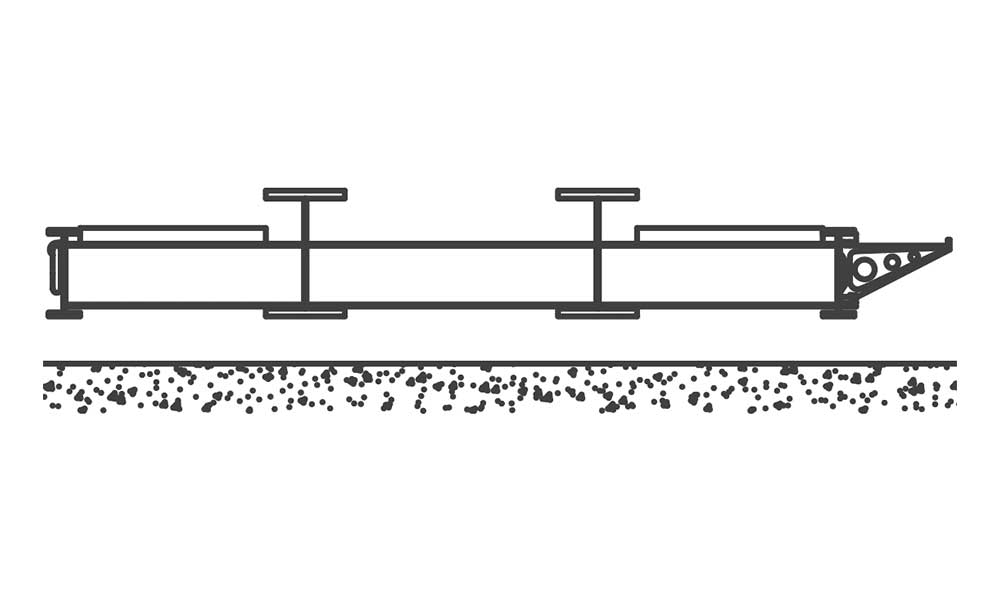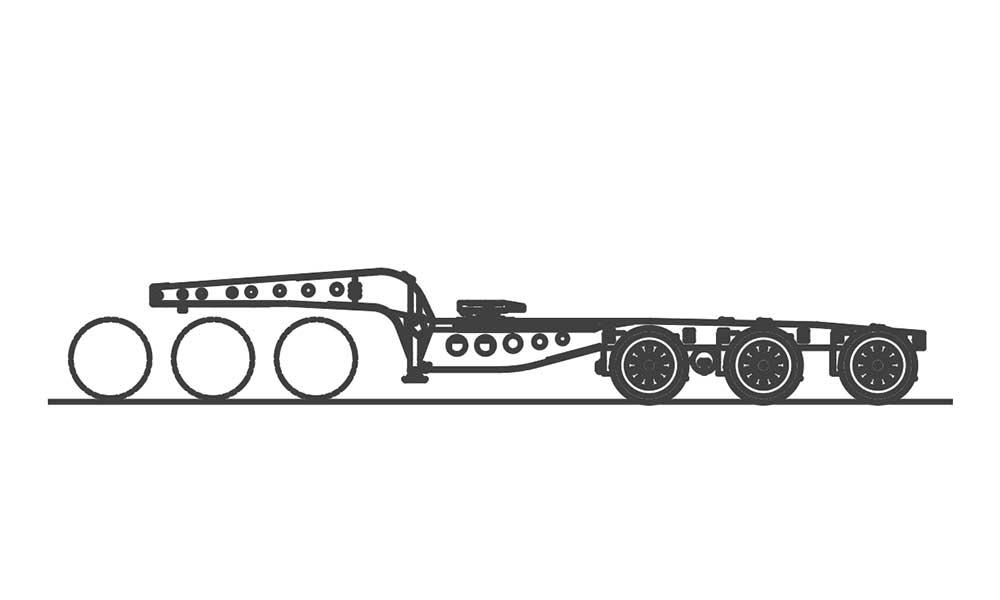The 85T weight class is built to receive a tridem jeep and a tridem axle booster with inter-axle group spacings of at least 14 ft 1 in. This group spacing is widely accepted across North America for heavy haul. If the inter-axle group spacing is lower, a short jeep can be used and may also increase the allowable payload. The front gooseneck has a pin-on extension that will flip up to minimize the overall length when returning empty. The bogey systems are always modular in this class as it also serves as a shim point to correctly distribute the weight on the axles.
The diagram shows a 85T unit with a tridem truck, jeep and booster. Other jeeps and truck combinations may be used but it may affect load distribution and/or the allowable payload.










